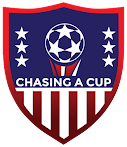

USMNT
Superior 20 u20 en Español (Abril 2020)
Published
5 years agoon
By
David Kerr20. Bryang Kayo: Centro Medio (Wolfsburg)
Bryang Kayo es un nombre que muchos reconocerán porque participó en el reciente campamento de enero. Kayo también estaba entre un grupo de prospectos (incluidos Kobe Hernandez-Foster y Johnny Cardoso) que se rumorea fueron convocados para los amistosos de USMNT que se suponía debieron haber tenido lugar en marzo. Kayo se dirige a Wolfsburg, donde en realidad puede saltar el nivel u19 y ser trasladado directamente a su equipo de reserva. Kayo es una versión más joven de Weston McKennie con más destreza técnica. Kayo podría entrar en el primer equipo de Wolfsburg en los próximos dos años y tiene la oportunidad de convertirse en un miembro de la piscina USMNT para este ciclo (una pequeña oportunidad … pero aún así una oportunidad).
19. Cameron Harper: Winger (Celtic FC)
Cameron Harper es el extremo que es conocido por pocos, pero altamente calificado por aquellos que son conscientes de su juego. Harper está aumentando rápidamente en Celtic y podría entrar en sus listas de juegos en el otoño. Harper es un extremo rápido que puede vencer a los defensores a voluntad. Harper ha sido el destacado hasta ahora en los campamentos de la Copa Mundial de U20 y si Uly Llanez es retenido de los U20, Harper se insertará en la alineación titular y será el jugador de ruptura en este grupo.
18. Brooklyn Raines: Centro Medio (Barca Academy AZ)
La Academia Barca en Casa Grande, Arizona ha producido algunos jugadores muy talentosos recientemente, Brooklyn Raines es el jugador más talentoso del grupo. Brooklyn es una versión más peligrosa de Tyler Adams. Brooklyn es muy buena posición y puede hacer bien en tacleadas de campo para recuperar y retener la posesión. Brooklyn está en la vía rápida a Europa, donde debe entrar en un equipo en al estylo de Tyler Adams como la moda donde inmediatamente se convierte en un jugador valioso para el centro del campo de un equipo. Brooklyn estará en el grupo del equipo nacional juvenil por otros 8 años y será el primer jugador en el equipo durante todo su mandato del equipo nacional juvenil.
17. Tanner Tessmann: Centro Medio (FC Dallas)
Tanner Tessmann ha disparado las listas más aun más que cualquier otro prospecto recientemente y es porque decidió firmar con el primer equipo del FC Dallas en lugar de perder el tiempo pateando por Clemson. Como dijo Dabo Swinney, Tanner es atléticamente dotado y su juego lo muestra en el campo. Tanner entró en la alineación titular del FC Dallas con facilidad, lo cual es algo que Paxton Pomykal no pudo hacer a los 18 años, lo que demuestra el potencial que tiene Tessmann. Tanner debe ser el gran ganador de la Copa Mundial sub-20 y debe reservar un boleto para un primer equipo europeo para ello.
16. Antonio Leone: Centro trasero (LAFC)
Es raro cuando hay una perspectiva de centro hacia atrás que se destaca entre la multitud cuando su grupo de edad es 16 años de edad, pero Tony ha logrado hacer esto. Tony es un prospecto de centro de élite que tiene el tamaño, el control de la pelota, el coeficiente intelectual y el juego agresivo para ser élite como centro de atrás. En este momento Leone está en peligro de cambiar a México, lo que sería una pérdida masiva para los Estados Unidos, ya que Leone fue enviado a la banca en el último campamento de EE. Esperemos que por el bien del centro a largo plazo de la espalda de la piscina, Tony se da cuenta de que el último campamento no estaba destinado a evaluar las cerraduras del grupo de edad y se junta con los buenos.
15. Jonathan Pérez: Winger/Attacking Mid (LA Galaxy)
Johnny Pérez es uno de los creadores de juegos más dinámicos en la piscina. Johnny es la perspectiva dinámica de creación de juegos que LA Galaxy realmente pudo retener después de que Uly Llanez se fue a Alemania. Johnny juega con mayor frecuencia como extremo derecho, pero es mejor como un 10 donde realmente se separa de la manada. Johnny constantemente hace jugadas y cambia el juego sin importar con quién juega contra. A principios de este año, Johnny hizo su debut en la USL y recogió una asistencia dentro de los 10 minutos de entrar en el campo y claramente se destacó de todas las otras perspectivas muy talentosas en el campo. Pérez es la mayor batalla nacional dual que Estados Unidos tiene actualmente con México, ya que Johnny juega actualmente para los malos y es el mejor jugador para los México 03 que son significativamente menos talentosos que los EE.
14. Jose Gallegos: Atacando a Mid (San Antonio FC)
José será el primer prospecto importante en salir de una academia de la USL. José es un clásico número 10 que puede diseccionar una defensa y facilitar la ofensiva de su equipo. José es, con mucho, el mejor jugador en San Antonio ya y todavía está en el último año en la escuela secundaria. Con Gio Reyna probablemente ser retenido del ciclo de la Copa Mundial sub20 José debería ser el titular en el 10. Anthony Hudson estuvo recientemente en el Podcast de BSI donde elogió la habilidad y el potencial de Gallegos.
13. Taylor Booth: Defensivo Medio (FC Bayern Munich)
Taylor Booth es uno de los pocos prospectos que no es de California (de echo puede ser el único) que la tripulación 343 realmente califica. Taylor Booth es un medio defensivo resistente a la prensa que es valioso en el ataque y no es un turnstyle defensivo. Taylor se encuentra actualmente en el Bayern Munich, pero su tiempo allí se está cerrando ya que no tiene el potencial de entrar en su primer equipo (no es realista esperar que lo haga). Taylor tiene la capacidad de pasar a una mesa media de la Bundesliga y puede romper durante el próximo año. Taylor luchará con Johnny Cardoso durante mucho tiempo para ser el 6 en el ciclo de la Copa Mundial sub20 y el ciclo olímpico 2024.
12. Julian Araujo: Espalda Derecha (LA Galaxy)
Julian Araujo debería ser el capitán del actual ciclo de la Copa Mundial sub-20 y será un lateral derecho que debería estar involucrado en las listas de USMNT durante mucho tiempo. Debido a que Mauricio Cuevas también está en el sistema Galaxy, Araujo debería ser trasladado a Europa lo más rápido posible , donde prosperará. Araujo es una de las apuestas más seguras para convertirse en la copia de seguridad de Sergino Dest a largo plazo.
11. Owen Otasowie: Centro de espalda/medio defensivo (Wolverhampton FC)
Owen Otasowie es una bestia de jugador que actualmente juega su oficio en Wolverhampton en la Premier League. Owen ya ha hecho su debut en la Premier League y ha atraído a los interesados de varios clubes de Europa y Wolverhampton tuvo que moverlo al primer equipo para mostrar cuán altamente calificado está en el club. Owen es el mejor prospecto central que Estados Unidos tiene en la piscina de la Copa Mundial sub20. Owen debe ser considerado para el ciclo olímpico actual y debe ser un jugador clave para el próximo ciclo. Owen será un jugador a tener en cuenta para el Ciclo de la Copa del Mundo 2026.
10. Konrad De La Fuente: Winger (FC Barcelona)
Konrad es el extremo más subestimado en el grupo de la selección nacional juvenil. Konrad lo está iluminando para los equipos juveniles del FC Barcelona y, sin embargo, nunca se lo habla como un prospecto USMNT de primer nivel por la mayoría de los fanáticos, lo que no entiendo. Konrad tuvo una áspera Copa del Mundo sub20, pero también fue el jugador más joven del equipo y aún así logró comenzar todos los partidos para un equipo que sorprendió a Francia y también tuvo Uly Llanez. Konrad se quedará en el FC Barcelona para el próximo año, pero los aficionados deberían estar esperando que se mueva a Alemania y se rompa en un equipo de la Bundesliga después de la Copa Mundial U20 del próximo verano.
9. Ricardo Pepi: Delantero (FC Dallas)
Ricardo Pepi es un delantero que puede hacerlo todo. Se puede combinar con sus compañeros de equipo, se puede estirar una línea de fondo, y él puede golpear en los objetivos. Pepi anotó 18 goles en 7 juegos en el nivel de DA u17, lo cual es absurdo, posteriormente ingresó a la USL League 1 y anotando un hattrick en su primer juego. Pepi tiene que mejorar su espalda a la capacidad de meta, pero cuando lo haga será un delantero de élite. Pepi debería ser el titular de la selección nacional de la Copa Mundial sub20 y será un objetivo europeo caliente después de la Copa Mundial sub20 en 2021.
8. Jonathan Gomez: Espalda Izquierda (Louisville City FC)
FC Dallas es una fábrica de súper talentos y Jonathan Gomez es el mejor talento para salir de su academia. Gómez es un lateral izquierdo que puede hacerlo todo. Gómez tiene el coeficiente intelectual, la habilidad y la mentalidad necesarias para llegar lejos en el juego. Jonathan se ha mudado del FC Dallas al Louisville City FC, donde jugará guiado por John Hackworth, quien vio prosperar múltiples perspectivas estadounidenses. Gómez se trasladará a Europa el próximo año y llegará lejos. Esté atento a este chico porque es una de las dos respuestas a la crisis de la espalda izquierda que el USMNT ha tenido en la última década.
7. Johnny Cardoso: Defensivo Medio (Internacional)
Muchos fanáticos a menudo se quejan de que Gregg Berhalter no presta atención a los jugadores fuera de la MLS. Gregg ha derribado rápidamente esa suposición al reclutar a Johnny Cardoso en el sistema de EE. Cardoso ha sido nombre comprobado por Gregg varias veces como una perspectiva no se puede perder. Cardoso ha entrado en el primer equipo internacional en Brasil y se necesita una capacidad técnica superior y fuerza mental para hacerlo en un país donde las perspectivas están luchando para escapar de una vida de pobreza en las favelas. Cardoso es un bloqueo en el 6 para el ciclo actual u20 y será una figura constante en las hojas del equipo de EE.
6. Uly Llanez: Winger (Wolfsburg)
Uly Llanez es el jugador que, literalmente, todos los fanáticos de USMNT están pidiendo Gregg Berhalter para integrarse en el USMNT tan pronto como sea posible y por una buena razón, Uly puede jugar. Uly tiene todas las herramientas que buscas en un extremo y debe entrar en el primer equipo de Wolfsburg tan pronto como se reanude la Bundesliga. Si bien hay muchas grandes perspectivas en esta lista, Uly es uno de los únicos bloqueos para ser un contribuyente USMNT en el corto plazo.
5. Nati Clarke: espalda derecha / espalda central (Sporting Kansas City)
En este momento, la gente está encerrando a Sergino Dest en el lugar de partida para la próxima década, pero no deberían debido a Nati Clarke. Nati puede ser el jugador más atléticamente dotado en toda esta lista, pero ser atléticamente dotado no le da su lugar en el top 5. Nati tiene todas las herramientas técnicas en su juego y si Sporting Kansas City puede desarrollar su coeficiente intelectual de fútbol, entonces Nati rápidamente estará atado a Europa y encerrado en una alineación titular para quien pueda firmarlo. Al buscar un jugador joven para entrar en el USMNT para el ciclo de la Copa del Mundo 2026, Nati Clarke tiene la mayor probabilidad de todos ellos, ya que tendrá 21 en 2026.
4. Moses Nyeman: Centro Medio/Atacante Medio (DC United)
Moisés Nyeman será un bloomer tardío, pero cuando florece será grande. Moisés puede literalmente hacerlo todo. Moisés es excepcional en todos los aspectos del juego y está listo para la MLS a pesar de ser el jugador más pequeño que verás en el campo. Moisés no tiene potencial de estrellas, tiene potencial de superestrella. Lo único que separa a Moisés de ser una estrella en el campo son sus atributos físicos.
3. Malick Sanogo: Delantero/extremo (FC Union Berlin)
Malick Sanogo es el mejor prospecto delantero que Estados Unidos no ha nombrado Josh Sargent. El fútbol corre en las venas de Sanogo cuando su padre fue contratado como entrenador delantero en Union Berlin. Sanogo actualmente es el segundo entre todos los 2004 en las ligas juveniles alemanas por goles y asistencias, el jugador que lo lidera es Youssoufa Moukoko, que es un talento generacional. Estar produciendo a todos los demás jugadores de su edad en Alemania habla de volumen sobre el talento de Malick. Sin un segundo equipo en Union Berlin, la integración de Malick en el primer equipo será pronto. Malick podría abrirse paso en su primer equipo antes de la Copa Mundial 2022 y es el jugador de doble nacional de mayor prioridad que Estados Unidos tiene.
2. Kobe Hernandez-Foster: Espalda Izquierda (Wolfsburg)
Kobe es el mejor prospecto de izquierda que Estados Unidos haya tenido. Kobe fue tan valioso para el equipo de la Copa Mundial Sub-17 de 2019 que tuvieron que comenzarlo como centro porque era el mejor centro del equipo a pesar de que no era su posición natural. Kobe probablemente irrumpirá en el primer equipo de Wolfsburg el próximo año y se convertirá en el lateral izquierdo que el USMNT ha estado perdiendo. Gregg Berhalter debe tallar el nombre de Kobe en la alineación titular en el lateral izquierdo porque Kobe estará en la piscina salvo que ocurra una lesión crítica.
1. Gio Reyna: Winger/Attacking Mid (Borussia Dortmund)
20. Bryang Kayo: Centro Medio (Wolfsburg)
Bryang Kayo es un nombre que muchos reconocerán porque participó en el reciente campamento de enero. Kayo también estaba entre un grupo de prospectos (incluidos Kobe Hernandez-Foster y Johnny Cardoso) que se rumorea fueron convocados para los amistosos de USMNT que se suponía debieron haber tenido lugar en marzo. Kayo se dirige a Wolfsburg, donde en realidad puede saltar el nivel u19 y ser trasladado directamente a su equipo de reserva. Kayo es una versión más joven de Weston McKennie con más destreza técnica. Kayo podría entrar en el primer equipo de Wolfsburg en los próximos dos años y tiene la oportunidad de convertirse en un miembro de la piscina USMNT para este ciclo (una pequeña oportunidad … pero aún así una oportunidad).
19. Cameron Harper: Winger (Celtic FC)
Cameron Harper es el extremo que es conocido por pocos, pero altamente calificado por aquellos que son conscientes de su juego. Harper está aumentando rápidamente en Celtic y podría entrar en sus listas de juegos en el otoño. Harper es un extremo rápido que puede vencer a los defensores a voluntad. Harper ha sido el destacado hasta ahora en los campamentos de la Copa Mundial de U20 y si Uly Llanez es retenido de los U20, Harper se insertará en la alineación titular y será el jugador de ruptura en este grupo.
18. Brooklyn Raines: Centro Medio (Barca Academy AZ)
La Academia Barca en Casa Grande, Arizona ha producido algunos jugadores muy talentosos recientemente, Brooklyn Raines es el jugador más talentoso del grupo. Brooklyn es una versión más peligrosa de Tyler Adams. Brooklyn es muy buena posición y puede hacer bien en tacleadas de campo para recuperar y retener la posesión. Brooklyn está en la vía rápida a Europa, donde debe entrar en un equipo en al estylo de Tyler Adams como la moda donde inmediatamente se convierte en un jugador valioso para el centro del campo de un equipo. Brooklyn estará en el grupo del equipo nacional juvenil por otros 8 años y será el primer jugador en el equipo durante todo su mandato del equipo nacional juvenil.
17. Tanner Tessmann: Centro Medio (FC Dallas)
Tanner Tessmann ha disparado las listas más aun más que cualquier otro prospecto recientemente y es porque decidió firmar con el primer equipo del FC Dallas en lugar de perder el tiempo pateando por Clemson. Como dijo Dabo Swinney, Tanner es atléticamente dotado y su juego lo muestra en el campo. Tanner entró en la alineación titular del FC Dallas con facilidad, lo cual es algo que Paxton Pomykal no pudo hacer a los 18 años, lo que demuestra el potencial que tiene Tessmann. Tanner debe ser el gran ganador de la Copa Mundial sub-20 y debe reservar un boleto para un primer equipo europeo para ello.
16. Antonio Leone: Centro trasero (LAFC)
Es raro cuando hay una perspectiva de centro hacia atrás que se destaca entre la multitud cuando su grupo de edad es 16 años de edad, pero Tony ha logrado hacer esto. Tony es un prospecto de centro de élite que tiene el tamaño, el control de la pelota, el coeficiente intelectual y el juego agresivo para ser élite como centro de atrás. En este momento Leone está en peligro de cambiar a México, lo que sería una pérdida masiva para los Estados Unidos, ya que Leone fue enviado a la banca en el último campamento de EE. Esperemos que por el bien del centro a largo plazo de la espalda de la piscina, Tony se da cuenta de que el último campamento no estaba destinado a evaluar las cerraduras del grupo de edad y se junta con los buenos.
15. Jonathan Pérez: Winger/Attacking Mid (LA Galaxy)
Johnny Pérez es uno de los creadores de juegos más dinámicos en la piscina. Johnny es la perspectiva dinámica de creación de juegos que LA Galaxy realmente pudo retener después de que Uly Llanez se fue a Alemania. Johnny juega con mayor frecuencia como extremo derecho, pero es mejor como un 10 donde realmente se separa de la manada. Johnny constantemente hace jugadas y cambia el juego sin importar con quién juega contra. A principios de este año, Johnny hizo su debut en la USL y recogió una asistencia dentro de los 10 minutos de entrar en el campo y claramente se destacó de todas las otras perspectivas muy talentosas en el campo. Pérez es la mayor batalla nacional dual que Estados Unidos tiene actualmente con México, ya que Johnny juega actualmente para los malos y es el mejor jugador para los México 03 que son significativamente menos talentosos que los EE.
14. Jose Gallegos: Atacando a Mid (San Antonio FC)
José será el primer prospecto importante en salir de una academia de la USL. José es un clásico número 10 que puede diseccionar una defensa y facilitar la ofensiva de su equipo. José es, con mucho, el mejor jugador en San Antonio ya y todavía está en el último año en la escuela secundaria. Con Gio Reyna probablemente ser retenido del ciclo de la Copa Mundial sub20 José debería ser el titular en el 10. Anthony Hudson estuvo recientemente en el Podcast de BSI donde elogió la habilidad y el potencial de Gallegos.
13. Taylor Booth: Defensivo Medio (FC Bayern Munich)
Taylor Booth es uno de los pocos prospectos que no es de California (de echo puede ser el único) que la tripulación 343 realmente califica. Taylor Booth es un medio defensivo resistente a la prensa que es valioso en el ataque y no es un turnstyle defensivo. Taylor se encuentra actualmente en el Bayern Munich, pero su tiempo allí se está cerrando ya que no tiene el potencial de entrar en su primer equipo (no es realista esperar que lo haga). Taylor tiene la capacidad de pasar a una mesa media de la Bundesliga y puede romper durante el próximo año. Taylor luchará con Johnny Cardoso durante mucho tiempo para ser el 6 en el ciclo de la Copa Mundial sub20 y el ciclo olímpico 2024.
12. Julian Araujo: Espalda Derecha (LA Galaxy)
Julian Araujo debería ser el capitán del actual ciclo de la Copa Mundial sub-20 y será un lateral derecho que debería estar involucrado en las listas de USMNT durante mucho tiempo. Debido a que Mauricio Cuevas también está en el sistema Galaxy, Araujo debería ser trasladado a Europa lo más rápido posible , donde prosperará. Araujo es una de las apuestas más seguras para convertirse en la copia de seguridad de Sergino Dest a largo plazo.
11. Owen Otasowie: Centro de espalda/medio defensivo (Wolverhampton FC)
Owen Otasowie es una bestia de jugador que actualmente juega su oficio en Wolverhampton en la Premier League. Owen ya ha hecho su debut en la Premier League y ha atraído a los interesados de varios clubes de Europa y Wolverhampton tuvo que moverlo al primer equipo para mostrar cuán altamente calificado está en el club. Owen es el mejor prospecto central que Estados Unidos tiene en la piscina de la Copa Mundial sub20. Owen debe ser considerado para el ciclo olímpico actual y debe ser un jugador clave para el próximo ciclo. Owen será un jugador a tener en cuenta para el Ciclo de la Copa del Mundo 2026.
10. Konrad De La Fuente: Winger (FC Barcelona)
Konrad es el extremo más subestimado en el grupo de la selección nacional juvenil. Konrad lo está iluminando para los equipos juveniles del FC Barcelona y, sin embargo, nunca se lo habla como un prospecto USMNT de primer nivel por la mayoría de los fanáticos, lo que no entiendo. Konrad tuvo una áspera Copa del Mundo sub20, pero también fue el jugador más joven del equipo y aún así logró comenzar todos los partidos para un equipo que sorprendió a Francia y también tuvo Uly Llanez. Konrad se quedará en el FC Barcelona para el próximo año, pero los aficionados deberían estar esperando que se mueva a Alemania y se rompa en un equipo de la Bundesliga después de la Copa Mundial U20 del próximo verano.
9. Ricardo Pepi: Delantero (FC Dallas)
Ricardo Pepi es un delantero que puede hacerlo todo. Se puede combinar con sus compañeros de equipo, se puede estirar una línea de fondo, y él puede golpear en los objetivos. Pepi anotó 18 goles en 7 juegos en el nivel de DA u17, lo cual es absurdo, posteriormente ingresó a la USL League 1 y anotando un hattrick en su primer juego. Pepi tiene que mejorar su espalda a la capacidad de meta, pero cuando lo haga será un delantero de élite. Pepi debería ser el titular de la selección nacional de la Copa Mundial sub20 y será un objetivo europeo caliente después de la Copa Mundial sub20 en 2021.
8. Jonathan Gomez: Espalda Izquierda (Louisville City FC)
FC Dallas es una fábrica de súper talentos y Jonathan Gomez es el mejor talento para salir de su academia. Gómez es un lateral izquierdo que puede hacerlo todo. Gómez tiene el coeficiente intelectual, la habilidad y la mentalidad necesarias para llegar lejos en el juego. Jonathan se ha mudado del FC Dallas al Louisville City FC, donde jugará guiado por John Hackworth, quien vio prosperar múltiples perspectivas estadounidenses. Gómez se trasladará a Europa el próximo año y llegará lejos. Esté atento a este chico porque es una de las dos respuestas a la crisis de la espalda izquierda que el USMNT ha tenido en la última década.
7. Johnny Cardoso: Defensivo Medio (Internacional)
Muchos fanáticos a menudo se quejan de que Gregg Berhalter no presta atención a los jugadores fuera de la MLS. Gregg ha derribado rápidamente esa suposición al reclutar a Johnny Cardoso en el sistema de EE. Cardoso ha sido nombre comprobado por Gregg varias veces como una perspectiva no se puede perder. Cardoso ha entrado en el primer equipo internacional en Brasil y se necesita una capacidad técnica superior y fuerza mental para hacerlo en un país donde las perspectivas están luchando para escapar de una vida de pobreza en las favelas. Cardoso es un bloqueo en el 6 para el ciclo actual u20 y será una figura constante en las hojas del equipo de EE.
6. Uly Llanez: Winger (Wolfsburg)
Uly Llanez es el jugador que, literalmente, todos los fanáticos de USMNT están pidiendo Gregg Berhalter para integrarse en el USMNT tan pronto como sea posible y por una buena razón, Uly puede jugar. Uly tiene todas las herramientas que buscas en un extremo y debe entrar en el primer equipo de Wolfsburg tan pronto como se reanude la Bundesliga. Si bien hay muchas grandes perspectivas en esta lista, Uly es uno de los únicos bloqueos para ser un contribuyente USMNT en el corto plazo.
5. Nati Clarke: espalda derecha / espalda central (Sporting Kansas City)
En este momento, la gente está encerrando a Sergino Dest en el lugar de partida para la próxima década, pero no deberían debido a Nati Clarke. Nati puede ser el jugador más atléticamente dotado en toda esta lista, pero ser atléticamente dotado no le da su lugar en el top 5. Nati tiene todas las herramientas técnicas en su juego y si Sporting Kansas City puede desarrollar su coeficiente intelectual de fútbol, entonces Nati rápidamente estará atado a Europa y encerrado en una alineación titular para quien pueda firmarlo. Al buscar un jugador joven para entrar en el USMNT para el ciclo de la Copa del Mundo 2026, Nati Clarke tiene la mayor probabilidad de todos ellos, ya que tendrá 21 en 2026.
4. Moses Nyeman: Centro Medio/Atacante Medio (DC United)
Moisés Nyeman será un bloomer tardío, pero cuando florece será grande. Moisés puede literalmente hacerlo todo. Moisés es excepcional en todos los aspectos del juego y está listo para la MLS a pesar de ser el jugador más pequeño que verás en el campo. Moisés no tiene potencial de estrellas, tiene potencial de superestrella. Lo único que separa a Moisés de ser una estrella en el campo son sus atributos físicos.
3. Malick Sanogo: Delantero/extremo (FC Union Berlin)
Malick Sanogo es el mejor prospecto delantero que Estados Unidos no ha nombrado Josh Sargent. El fútbol corre en las venas de Sanogo cuando su padre fue contratado como entrenador delantero en Union Berlin. Sanogo actualmente es el segundo entre todos los 2004 en las ligas juveniles alemanas por goles y asistencias, el jugador que lo lidera es Youssoufa Moukoko, que es un talento generacional. Estar produciendo a todos los demás jugadores de su edad en Alemania habla de volumen sobre el talento de Malick. Sin un segundo equipo en Union Berlin, la integración de Malick en el primer equipo será pronto. Malick podría abrirse paso en su primer equipo antes de la Copa Mundial 2022 y es el jugador de doble nacional de mayor prioridad que Estados Unidos tiene.
2. Kobe Hernandez-Foster: Espalda Izquierda (Wolfsburg)
Kobe es el mejor prospecto de izquierda que Estados Unidos haya tenido. Kobe fue tan valioso para el equipo de la Copa Mundial Sub-17 de 2019 que tuvieron que comenzarlo como centro porque era el mejor centro del equipo a pesar de que no era su posición natural. Kobe probablemente irrumpirá en el primer equipo de Wolfsburg el próximo año y se convertirá en el lateral izquierdo que el USMNT ha estado perdiendo. Gregg Berhalter debe tallar el nombre de Kobe en la alineación titular en el lateral izquierdo porque Kobe estará en la piscina salvo que ocurra una lesión crítica.
1. Gio Reyna: Winger/Attacking Mid (Borussia Dortmund)
Esta fue una opción obvia para el mejor prospecto estadounidense. Gio es el estadounidense con más talento para jugar el juego y no es realmente ni siquiera cerca. Muchos en Dortmund dicen que tiene aún más talento que Christian Pulisic. Creo que Gio superará a Christian y que será más rápido de lo que la gente espera. Mientras que Christian es el próximo Landon Donovan, Gio es el próximo Clint Dempsey. Gio será el mejor jugador del equipo para las Copas Mundiales 2026 y 2030 y probablemente será un titular para la Copa Mundial 2022.tw
USMNT
Breaking the Mold: Freese a Unique USMNT Goalkeeper
Published
11 hours agoon
December 12, 2025
Thomas Deschaine (@uskeeper on X and us_keeper on Instagram)
With only the March window left before Mauricio Pochettino finalizes the 2026 World Cup roster, one major question remains: who can truly be trusted to guard the net? It’s a debate still dividing media, fans, and observers alike.
The USMNT has produced some legendary goalkeepers over the past four decades, but the current pool has yet to see anyone truly seize the No. 1 spot. For a while, it looked like Matt Turner might start in back-to-back World Cups, but after a poor summer performance against Switzerland, he lost his place to Matt Freese. Freese went on to start the last thirteen matches, yet outside of his heroics in the 2025 Gold Cup penalty shootout, echoing Turner’s run in 2023, Freese hasn’t fully convinced me he should be the starter at the 2026 FIFA World Cup.
Since the 1990 cycle, five USMNT goalkeepers, Tony Meola, Kasey Keller, Brad Friedel, Tim Howard, and Matt Turner, have earned the World Cup starting role. Each of them logged minutes in the grueling World Cup qualifying process before taking the job. But Matt Freese could become the first USMNT goalkeeper to start a World Cup without ever playing a single qualifier.
Tony Meola – 1990 Italy World Cup

Creator: Bob Thomas | Credit: Getty Images
Tony Meola remains the youngest goalkeeper ever to start a World Cup for the USMNT. He went on to start in back-to-back tournaments and later served as the backup at the 2002 World Cup alongside Brad Friedel and Kasey Keller.
First Cap (Age) – June 7, 1998 (19 years, 3 month & 17 days)
World Cup 1990 (Age) – (21 years, 3 months, 10 days)
Overall Stats heading into the World Cup
Matches Played – 17
Matches Started – 15
Minutes Played – 1,395
Wins – 7
Shutouts – 6
World Cup Qualifying Stats
Matches Played – 4
Matches Started – 4
Minutes Played – 360
Wins – 2
Shutouts – 4
Kasey Keller – 1998 France World Cup
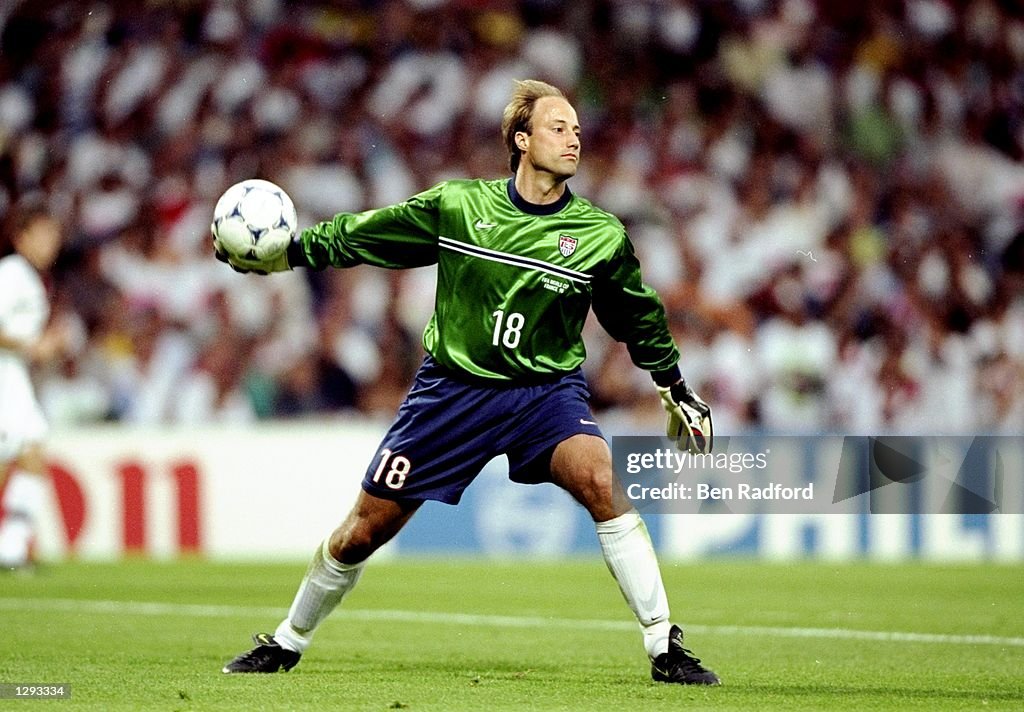
Kasey Keller, one of the backups to Tony Meola at the 1990 World Cup, was left off the 1994 roster but later reestablished himself in the USMNT picture. He went on to become the primary starter for the 1998 and 2006 World Cups and served as the backup on the 2002 team.
Creator: Ben Radford | Credit: Getty Images
First Cap (Age) – February 4, 1990 (20 years, 2 months & 6 days)
World Cup 1998 (Age) – (28 years, 6 months, 15 days)
Overall Stats heading into the World Cup
Matches Played – 34
Matches Started – 33
Minutes Played – 2,790
Wins – 18
Shutouts – 16
World Cup Qualifying Stats
Matches Played – 9
Matches Started – 9
Minutes Played – 810
Wins – 5
Shutouts – 6
Brad Friedel – 2002 Korea/Japan World Cup
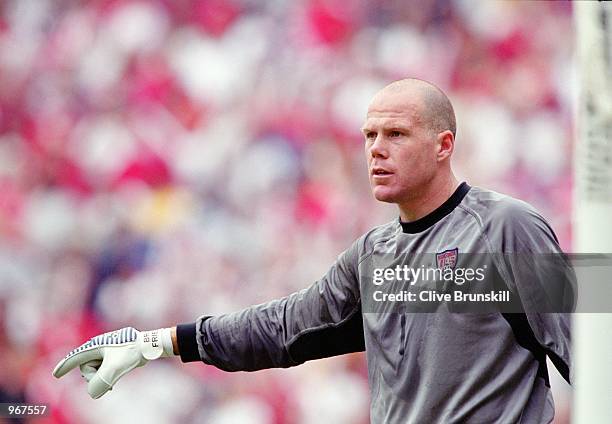
Creator: Clive Brunskill | Credit: Getty Images
Brad Friedel, who started all five U.S. matches at the 2002 World Cup and made one start in 1998, earned a place on three USMNT World Cup squads during his career.
First Cap (Age) – September 3, 1992 (21 years, 3 months, 16 days)
World Cup 2002 (Age) – (31 years, 0 months, 5 days)
Overall Stats heading into the World Cup
Matches Played – 76
Matches Started – 74
Minutes Played – 6,453
Wins – 25
Shutouts – 23
World Cup Qualifying Stats
Matches Played – 13
Matches Started – 13
Minutes Played – 1,125
Wins – 7
Shutouts – 4
Tim Howard – 2010 South Africa

Creator: Ronald Wittek | Credit: Alamy
Tim Howard, the oldest first-time World Cup starter among this group, may also be the most accomplished. He appeared on three World Cup rosters, and likely would have made a fourth had the USMNT qualified in 2018.
First Cap (Age) – March 10, 2002 (23 years, 0 months, 4 days)
World Cup 2010 (Age) – (31 years, 3 months, 12 days)
Overall Stats heading into the World Cup
Matches Played – 51
Matches Started – 50
Minutes Played – 4,185
Wins – 31
Shutouts – 23
World Cup Qualifying Stats
Matches Played – 16
Matches Started – 16
Minutes Played – 1,440
Wins – 12
Shutouts – 8
Matt Turner – 2022 Qatar
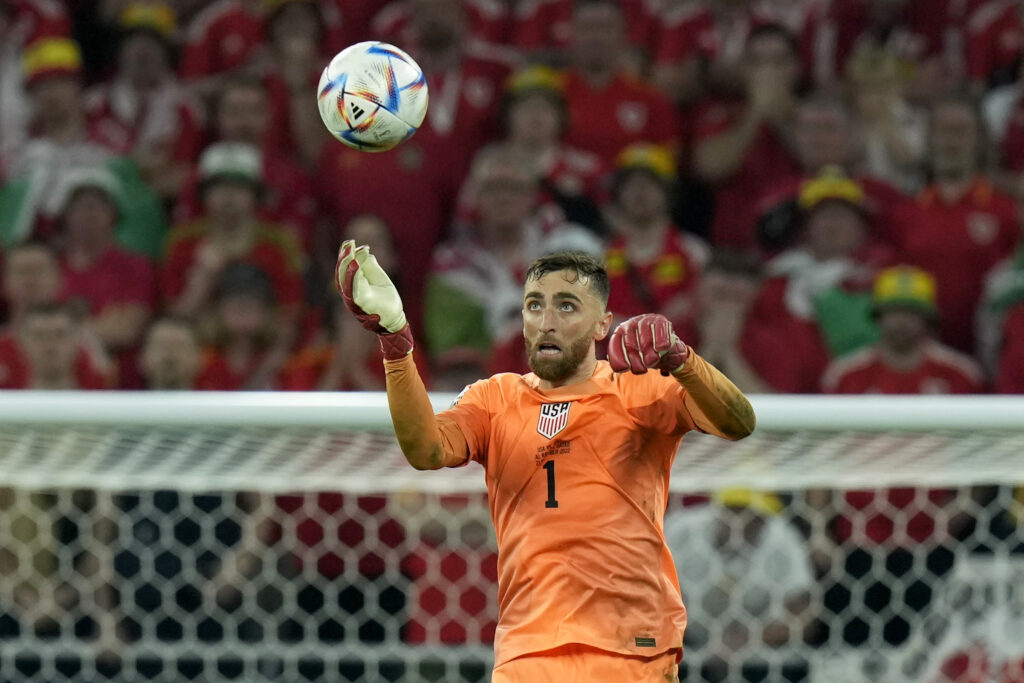
Creator: Francisco Seco | Credit: AP
Turner seized his opportunity when an unwell Zack Steffen was forced off the roster to start the World Cup qualifying, stepping in to start the first of eight World Cup qualifiers. His performances solidified his place as the USMNT’s starting goalkeeper for the 2022 World Cup.
First Cap (Age) – January 31, 2021 (26 years, 9 months, 3 days)
World Cup 2022 (Age) – (28 years, 4 months, 21 days)
Overall Stats heading into the World Cup
Matches Played – 20
Matches Started – 20
Minutes Played – 1,800
Wins – 14
Shutouts – 14
World Cup Qualifying Stats
Matches Played – 8
Matches Started – 8
Minutes Played – 720
Wins – 4
Shutouts – 4
Matt Freese
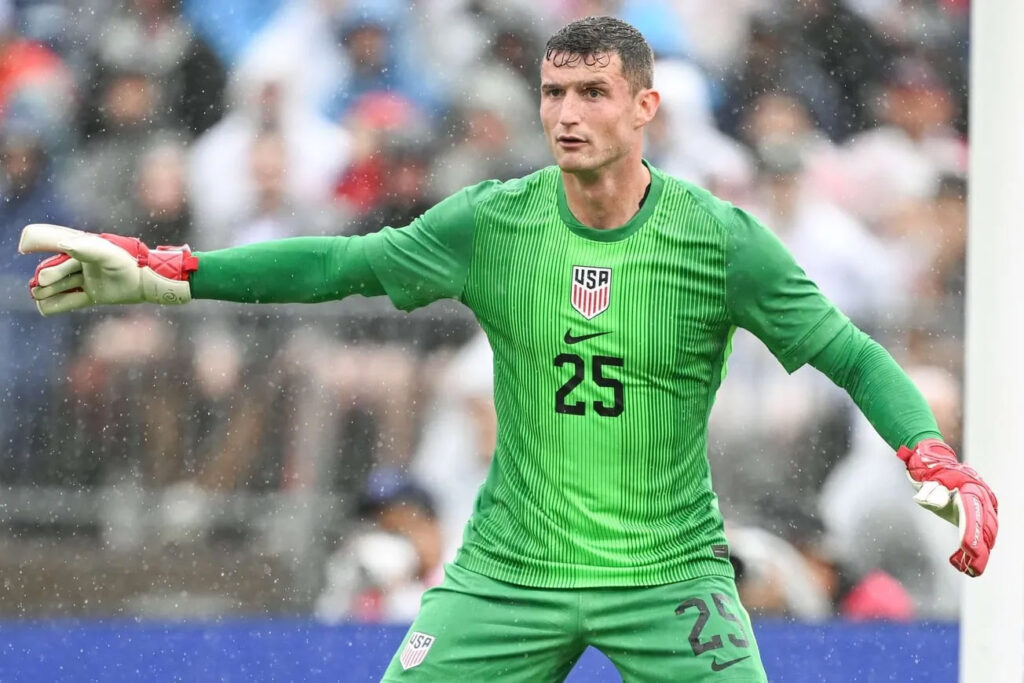
Courtesy USMNT
Matt Freese would have the shortest runway of any USMNT goalkeeper, from earning his first cap to potentially starting at a World Cup. He would also become the first U.S. keeper to start at a World Cup without having played a single World Cup qualifier.
First Cap (Age) – June 5, 2025 (26 years, 9 months, 3 days)
World Cup 2026 (Age) – (27 years, 9 months, 12 days)
Overall Stats heading into the World Cup
Matches Played – 13
Matches Started – 13
Minutes Played – 1,170
Wins – 7*
Shutouts – 3*
World Cup Qualifying Stats
Matches Played – n/a
Matches Started – n/a
Minutes Played – n/a
Wins – n/a
Shutouts – n/a
It’s clear the USMNT doesn’t have a true front-runner in goal even though Mauricio Pochettino currently leans toward Matt Freese, but as we’ve seen, things can change fast. Matt Turner, Patrick Schulte, Chris Brady, Roman Celentano, and Jonathan Klinsmann will all need to push hard to earn their place on the final roster.
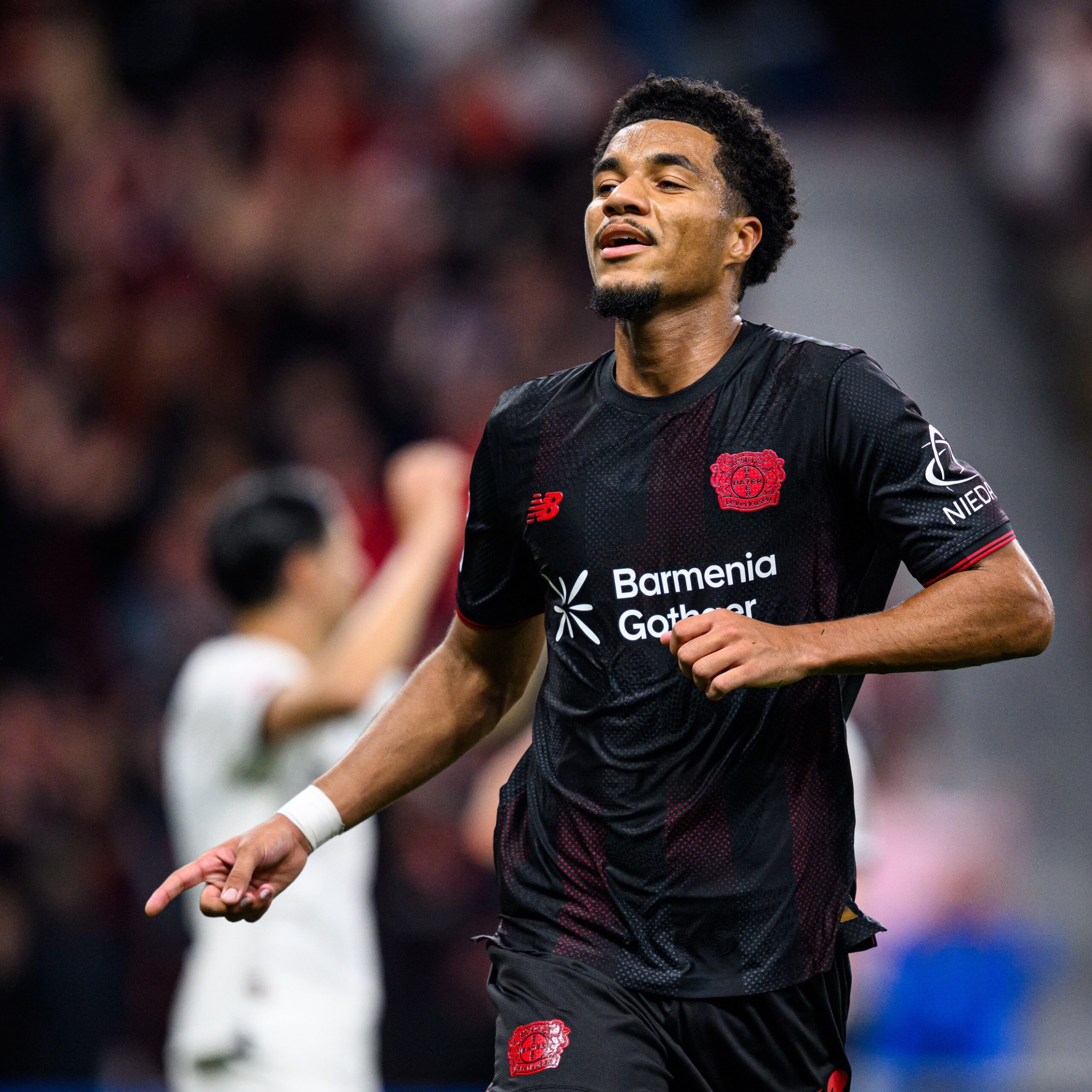
Last year, I wrote a stock-up/stock-down article covering ten Americans who either made a move to Europe or to the U.S. We are closing in on New Year’s and about 6 months until the World Cup (June 11th, 2026), giving us enough data to know if these transfers have been beneficial not just for the players’ club careers, but to make it onto the USMNT for the World Cup. As American soccer players, this season is the most important season of their international career. The players are making one last argument for them to be at a USMNT camp and be part of the team when the United States of America co-hosts the FIFA World Cup. So far, a lot of the European transfers have not gone so well, compared to the domestic transfers.
*All information is up to date as of December 1st, 2025.
Yunus Musah to Atalanta (loan)- Stocks Down

When Massimiliano Allegri took over AC Milan, he cleaned house. Twenty-four players were permanently transferred out of the club or sent on loan (some for positive reasons and others, not so much). Yunus Musah happened to be one of those 24 players. AC Milan sent Musah on loan to fellow Serie A club, Atalanta, with an option to buy that is worth $28 million. As things stand, it does not look like Atalanta will trigger their buy option at the end of the season. Musah has only one start and has appeared in 9 matches (a total of 203 minutes) while being available for a total of 16 matches since joining the Nerazzurri. When it comes to goal contributions, Musah has only one assist coming from the Champions League match against Club Brugge. When it comes to passing, Musah’s accuracy has not been bad (83.5%), but he is lacking in chances created with only 3.
He has never been known for scoring goals, but his total shots this half of the season are as low as 0.6. As for his defensive work, it has been average. He has only 2 interceptions, has lacked successful tackles (25% success rate at 1/4), and he has committed a penalty. The only positive is his ball recovery rate, which is at 16. Statistically, the only areas where he sees positive results have been in his dribbling (60% completion) and duels won (59.5%). From Atalanta’s standpoint, if he is offering little in the final third and in your defensive half, then what is the purpose of starting him? As for the USMNT, his poor form at his club has not gone unnoticed by Mauricio Pochettino. The last time Musah received a call-up to the USMNT was for the Gold Cup, which he turned down and that could be a contributing factor to why he has not been called up since. Others in the midfield, and at right wing, have been able to stake their claim onto the team. At this point, we will not be seeing Yunus Musah make it onto the 26-man team this coming summer.
Johnny Cardoso to Atlético Madrid- Stock Down

One of the biggest transfers this past window for an American, and one of the closest followed transfers in Spain, was Johnny Cardoso’s $35 million (according to Goal) move to Atlético Madrid on a 5-year deal. Johnny was coming off a solid season with Real Betis that showed a promising career in Europe. He collected 4 goals and one assist as a defensive midfielder. In just two months of being at Real Betis, Johnny won the LaLiga U23 Player of the Month for February 2024. Fast forward to today, due to his lack of opportunities with Atleti and his USMNT form, his hopes of being at the World Cup are fading.
During pre-season, he made his way onto the starting XI for Atleti starting in the first three matches of the season. Sadly, he picked up an ankle injury that led him to miss 9 matches. Since returning on September 13th, 2025, Johnny went 5 matches without receiving a single minute. Diego Simeone has opted to go with veteran player, Koke, to start alongside Pablo Barrios and Conor Gallagher as the substitution. He finally got his chance when Simeone named him on the Starting XI in their UCL match against Inter Milan on November 26th, 2025. For someone who had not played a single minute since August, Johnny had a good game in the 59 minutes he received. When we look at the stats from those four matches, there were positives. His pass accuracy sits at 77% with 62% total duels won. Johnny also completed 67% of his dribbles, had 4 interceptions, 2.65 tackles per game, 9 clearances, and 9 balls recovered. Obviously, stats alone will not keep you on the pitch and the performances of the other midfielders as of late have made it difficult for Johnny.
Atleti fans on social media are happy with his performances, believe he should be a starter, and believe he is an important player to the team. Time is running out for him at the international level though with the final USMNT friendly camp coming up in March. He must make an argument for himself to get into that camp to get one last shot at the World Cup. If Johnny builds on his performance from the Inter Milan match, he could see himself in that final camp.
Paxten Aaronson to Colorado Rapids- Club: Stock Down

This will be seen as controversial by many MLS fans, but Paxten receives a stock down mostly because the move has not improved his chances of making it onto the USMNT and the impression that his career has regressed. Eintracht Frankfurt’s sporting director, Timmo Hardung, said, “With a view to the 2026 World Cup, which is taking place in his home country, among others, he made the request to take his next step at the Colorado Rapids.” During the Gold Cup, we saw 16 MLS players take part in the campaign. Paxten only received 58 minutes in total, when you include the friendly against Switzerland. It was the only camp he was called up to in 2025. We saw the likes of Diego Luna, Brian Gutierrez, Jack McGlynn, Luca de la Torre, and Sebastian Berhalter were either getting called up ahead of him and/or receiving more minutes than he was at the Gold Cup.
It set a precedent that no matter how well you perform in a top seven league, like the Eredivisie, the performance of those in the MLS will outweigh yours. In Paxten’s case, he had 8 goals and 4 assists in 30 starts for Utrecht, helping them finish 5th in the top Dutch league. His performance at Utrecht was enough for him to be part of Eintracht Frankfurt’s 2025/2026 campaign, who is competing in the UCL, part as stated by Hardung, Paxten submitted a transfer request to join Colorado Rapids. Yes, Paxten is getting regular minutes at Colorado instead of being a bench player, but he is coming back to MLS after just 2 ½ years in Europe. Despite receiving 571 minutes, Paxten only scored one goal and got 0 assists. It was not enough for Poch to give Paxten another chance with the USMNT, and the transfer had been all for nothing.
Malik Tillman to Bayer Leverkusen- Stock Up
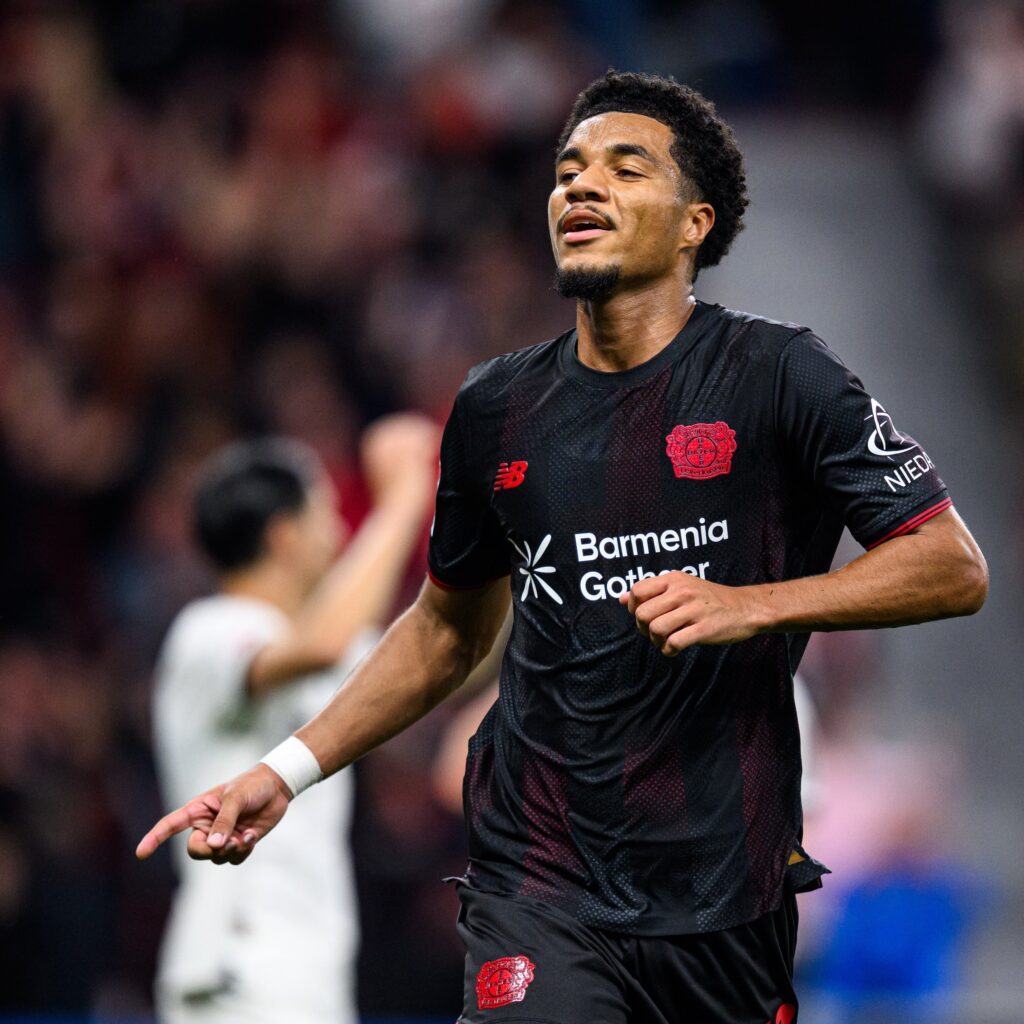
Three seasons ago (the 2022/2023 season), Malik Tillman left the Bundesliga after agreeing to a loan deal to Rangers F.C. from Bayern München. For the following season, Tillman went on loan to PSV Eindhoven, which became a permanent deal. This season, he is back in the Bundesliga, but this time with Bayer Leverkusen. In his debut match for Die Werkself, he scored a goal at the 35-minute mark. It has been a slow start for Tillman in the G/A department with only 3 goals in 12 matches, but there are still many positives to this move that show he can make it in the Bundesliga. When available, Tillman started in 10 matches, 3 of which have been UCL matches, and a total of 815 minutes played. Right now, Tillman has 1.50 xG in the Bundesliga with 187 goals per minute.
He also has a goal conversion of 25% to add on top of that. Outside of scoring, his pass accuracy is at 85%, but he has 0 assists and only 6 chances created. Defensively, Tillman has intercepted the ball 8 times, recovered it 33 times, 3 blocked shots, and has a success rate of 79.9% (18/24) tackles. Additionally, he has won 50% of his duels. A major reason why Tillman gets a stock up is because of one reason, he is playing consistently at a high level. Diego Luna is in the MLS and towards the end struggled with his production (it also did not help when Tillman looked like the better 10 in the Gold Cup).
Paxten would not be a starter for Eintracht Frankfurt if he had stayed and he took a step backwards. Gio Reyna is in the Bundesliga as well and is one of our most talented players, but he only has 189 minutes for Mönchengladbach. Despite Tillman’s continued issue of performing consistently, the fact he is getting regular minutes at a top five league club and finally performing for the USMNT, has locked him in as the #1 CAM for the U.S. at the World Cup.
Damion Downs to Southampton- Stock Down
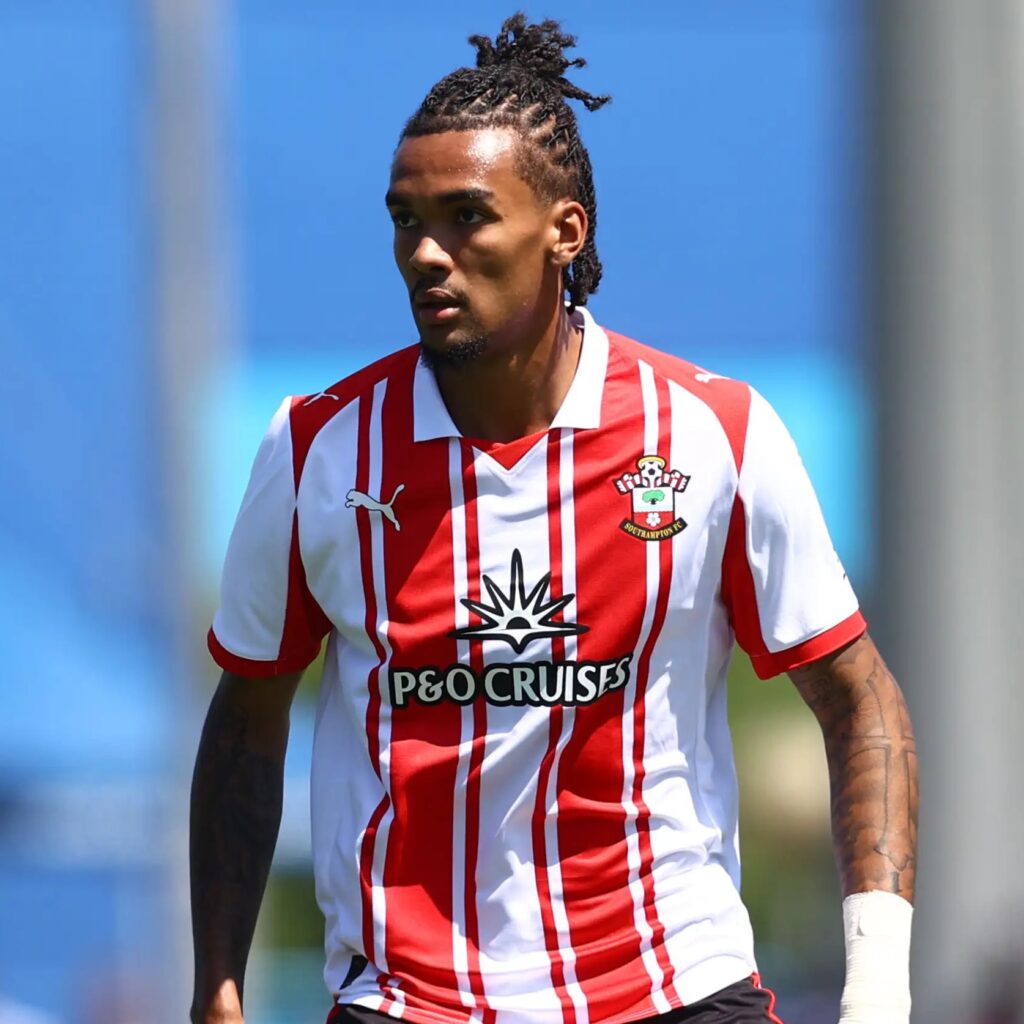
Damion Downs scored 2 goals in 179 minutes just shy of turning 20 years old. He followed this up with 10 goals and 3 assists in his first full season in a professional league when FC Köln was relegated to the 2. Bundesliga. FC Köln won the league and with-it promotion back into the Bundesliga. Downs contribution to the campaign got him a move to English Championship club, Southampton. Anyone who understands English football and Southampton’s striker depth knew this was a risky move. Prior to Downs joining, the club had Cameron Archer, Adam Armstrong, and Ross Stewart. So far, the transfer is going poorly and that is disappointing for a promising player. In 395 minutes, Downs has only one assist and gone 2 matches as an unused substitute. To make matters worse, he has only been on the matchday team sheet 16 times out of the possible 21 matches (Downs missed one match due to illness).
This move was not only important for Downs’ domestic career, but also his international career. During the 2024 Paris Olympics, Downs tried out for the U.S. Olympic team, but Marko Mitrović cut Downs from the team just before the Games. This led him to join Germany’s U20 to take part in their U20 Elite League campaign. It took Pochettino to give him an opportunity at the 2025 Gold Cup for Downs to rejoin the U.S. The goal for Downs would be to take that third striker spot with the USMNT this coming World Cup. Looking at his club form, that will not happen.
If you are looking for any positives, there are two. One, Downs is only 21 years old, so there is still plenty of time to recover his domestic career. Second, Downs is not the only striker at Southampton that has been struggling. Ross Stewart and Cameron Archer only have 2 goals, and one assist each this season. There is still the second half of the season to recover to possibly slide into the 2026 World Cup roster. If not, there is still the 2030 World Cup, which he will be 26 years old.
Patrick Agyemang to Derby County- Stock Down
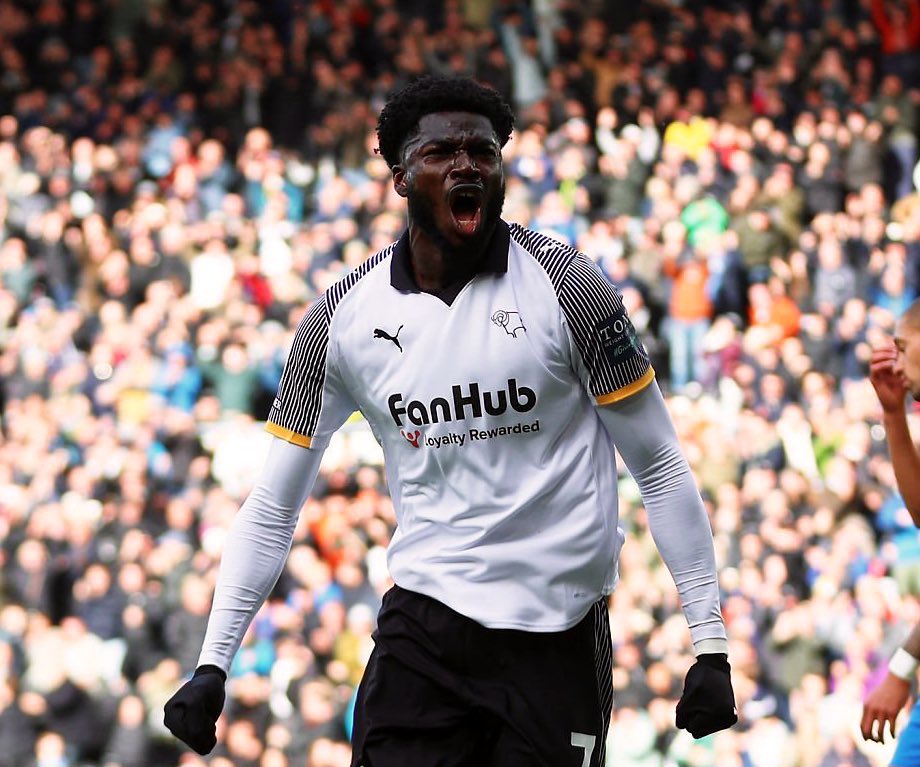
When the Gold Cup campaign began, Patrick Agyemang started all but one match, when you included the two friendly matches. Prior to the Gold Cup, Agyemang was part of ‘Camp Cupcake’ and the Nations League finals in March. In the three camps, he scored five goals. Many fans and pundits were calling him to be a lock for the USMNT and that appeared to be certain after the Gold Cup, but that is where it ended for him. For the September camp, Folarin Balogun, Josh Sargent, and Damion Downs were selected over Agyemang. Hope returned when he was called in for the October camp, but he did not receive a single minute in the two matches.
Then came the November camp where he did not get the call from Pochettino. What could have happened that led him to fall out of favor with Pochettino? There are two reasons: Balogun and Pepi have returned from injury, and Agyemang has been in poor form at Derby County. In 11 starts and 953 minutes played, Agyemang has only 3 goals and 3 assists. In comparison, fellow American and Championship player, Haji Wright has 9 goals and 2 assists in 14 starts. To make matters worse, Agyemang has 318 goals per minute, and his goal conversion is a meager 11%. His passing has not been the greatest sitting at 69% accuracy, but Agyemang is just short of creating a chance per game at 0.9 (13 chances created). Besides having a poor goal conversion rate, his ball retention is also poor. Agyemang has lost 66% of his duels and losses possession 11.2 per game.
Before his move to Derby County, Agyemang scored 8 goals in the current MLS season and finished last season with 10 goals. The move has not only been a stock down for him domestically, but also internationally. Agyemang needs to find his form quickly or he will not be part of the USMNT again this World Cup cycle.
Benjamin Cremaschi to Parma (loan)- Stock Down
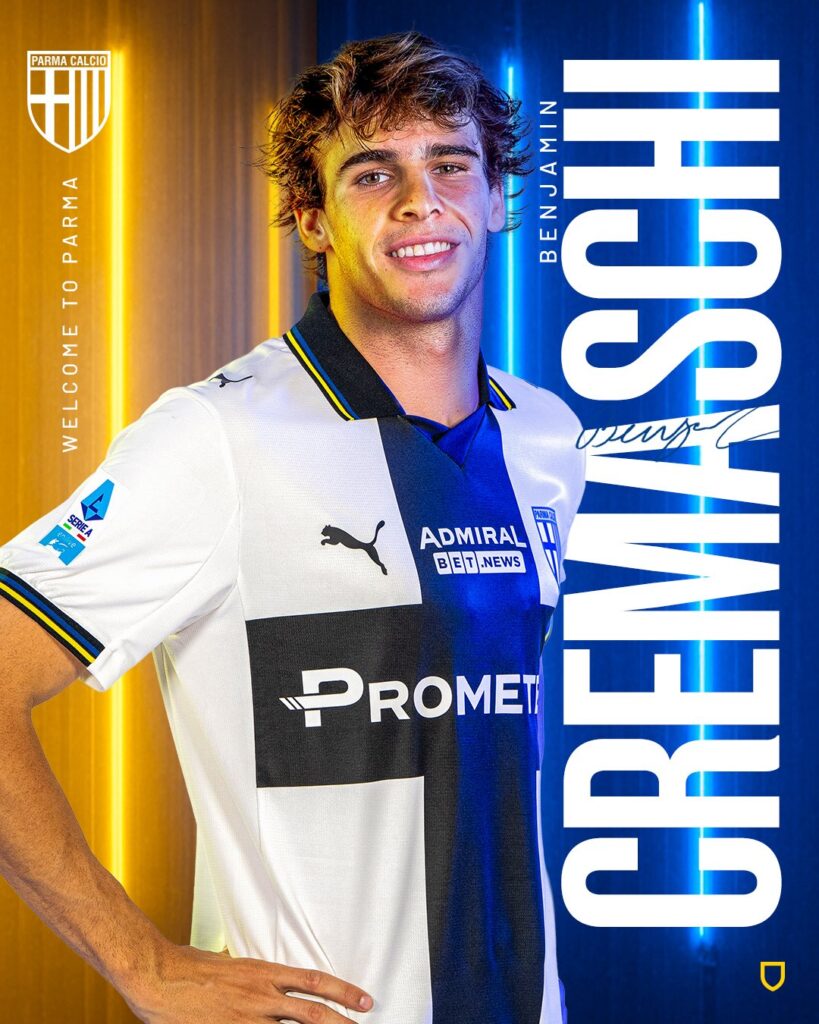
Benjamin Cremaschi was someone whose chances of making it to the World Cup were slim, but he took part in ‘Camp Cupcake’ and performed well in the U20 World Cup. Prior to the U20 World Cup, Cremaschi had yet to make his debut since joining Parma on loan at the end of the summer transfer window. After winning the golden boot at the U20 World Cup, Cremaschi got his debut, but he has only clocked in 14 minutes in 2 matches. On seven different occasions, Cremaschi has been an unused substitution by Carlos Cuesta. The loan deal includes a buy-option and so far, it does not look like Parma will exercise that option. Cremaschi needs to find his way on to the pitch to convince Parma to make the move permanent.
The move at first gave some hope that he could get back into the USMNT picture and his showing at the U20 World Cup reinforced that. Since he has not even reached 25 minutes in Serie A with barely any data and footage to go on, his chances at the World Cup are even less now. Cremaschi would have to try again during the 2030 World Cup cycle.
Timothy Weah to Marseille (loan)- Stock Up
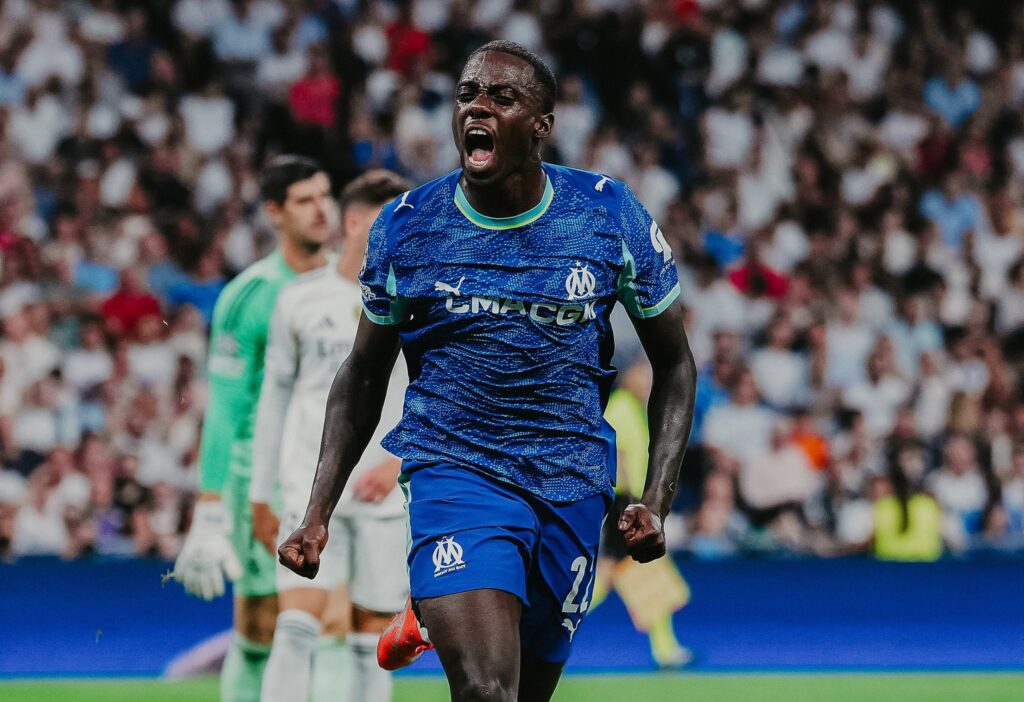
Even though Tim Weah set a personal record for goal contribution with 10 goals and assists, he only started in 24 matches. Now, he is on loan where his dad spent a spell at Marseille. The loan has worked out for Weah so far, starting in 12 of the 15 matches he has appeared in. Currently, Weah has 2 goals and 2 assists with a goal conversion of 23%. His passing accuracy is at 87% with 15 chances created. Weah’s defense has been decent with 59.1% tackles completed, 35 recoveries, and 15 clearances. The one stat that has been negative for him is his duels at 50%, which is not too bad. The move back to Ligue 1 has been beneficial to not just his playing time, but more fitting to his playing style.
Weah is still in the USMNT picture and there should be no doubt that he will be at the World Cup. The question is, at what position? Weah has been playing all along the right side for Marseille, mostly at RB. Now that the USMNT is using a 3-4-2-1, Weah is fighting with Sergiño Dest for that starting RWB spot. If Pochettino does not plan to have Weah at RWB, does he move to CAM, where the depth is deep, or to striker? It is likely that Weah would be placed at RWB, but I do not think it is a matter of being #1 or #2. Depending on who our opponent in the World Cup is would decide if Poch starts Weah or Dest.
Kristoffer Lund to 1. FC Köln (loan)- Stock Up
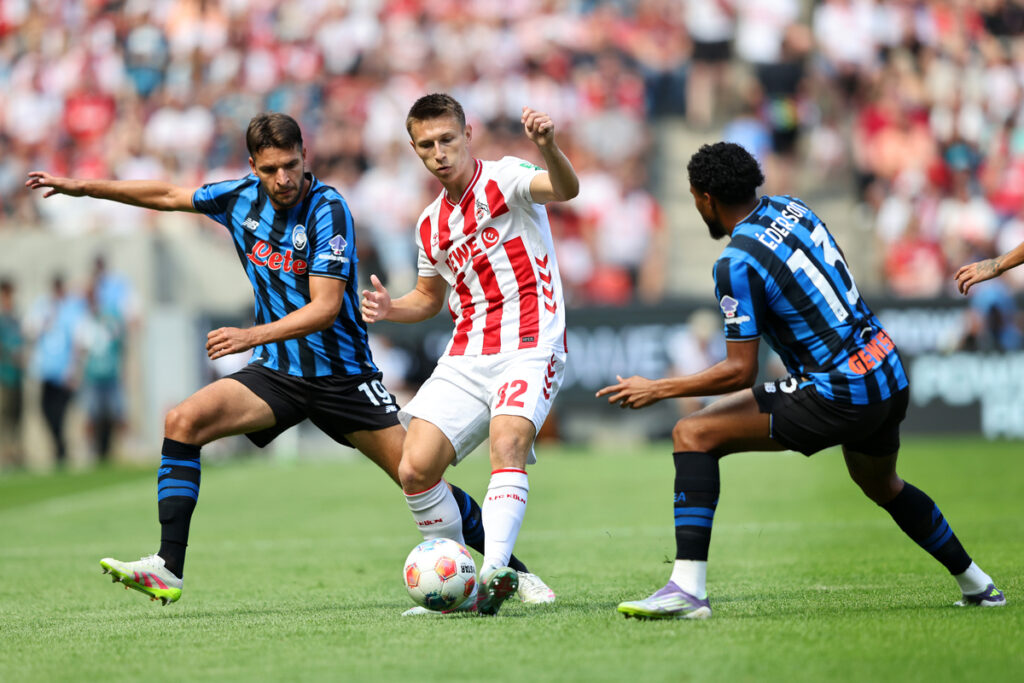
A surprise transfer over the summer came from Kris Lund when he joined FC Köln in the Bundesliga on loan. Lund started off strong when he joined Palermo in Serie B back in 2023/2024, but last season he struggled with his form and getting starts (he only started 24 of the 35 matches he appeared in). That is why when the report broke out that newly promoted Bundesliga club, FC Köln, signed him on loan with a buy-option, it took U.S. fans by surprise. It has been up and down for Lund since joining Köln, but the club is midtable and will likely avoid relegation. Lund has also been starting consistently for Die Geißböcke with 10 starts out of 14 matches. Due to him getting consistent starts for a midtable Bundesliga club, many USMNT fans have suggested that Pochettino should give Lund another chance.
That has not happened, either because there is something about his club performance that has not impressed Poch to call him up over John Tolkin and Max Arfsten, or Lund’s performance back in the October 2024 camp that left a bad impression. Looking at his stats, Lund has not really done anything offensively and that could be a reason why he has not gotten another look by Poch. His xG is at a low of .20 while his xA sits at .41. Lund did get his first Bundesliga assist recently in Köln’s match against Werder Bremen. Lund’s passing has not been too bad with an accuracy of 72.5%, but his chances created are only at 6. Defensively, he is doing better where he has 10 interceptions, 95.8% (9/12) completed tackles, 31 recoveries, and 36 clearances. A major negative in his records is that he has committed two penalties.
The loan has been good for his domestic career and caught the attention of USMNT fans again. If we are giving a midtable 2. Bundesliga player call-ups, then a midtable Bundesliga player should get another opportunity. It is doubtful that Lund will be at the March camp and at the World Cup. The LWB position will likely be covered by Antonee Robinson and Arfsten, one who has been reliable for us since the 2022 cycle and the other who has a 6 G/A this year. He is 23 years old, so there is always the 2030 World Cup. Lund simply needs to end the season on a positive note, make his move to Köln permanent, and then perform consistently throughout the next cycle.
Honorable Mention
George Campbell to West Brom Albion- Stock Up

Another surprise transfer was when George Campbell left Montréal for English Championship side, West Brom. So far, it has not gone too badly for him. While healthy, he has started in 13 matches with a total of 1,259 minutes. Campbell has collected 2 clean sheets with 9 interceptions, 81.94% (21/30) successful tackles, 47 recoveries, 73 clearances, and 8 blocked shots. The only major negative defensive stat Campbell has is committing one error that led to a shot. He has been successful with his passes by completing 89% of them, but Campbell’s duels have been average, winning 50% of all duels.
Like Lund, Campbell recently got his first English Championship assist in West Brom’s clash against Swansea off the bench. Due to the USMNT’s current lack of quality CBs, there were fans suggesting that Pochettino call up Campbell to give him a shot. The thing is though, Campbell has mostly played at RB, a position that is covered by Sergiño Dest, Alex Freeman, and Joe Scally. On the upside, Poch has moved to a back 3, which could give Campbell access to the USMNT. It is doubtful that he will get a chance at the March camp, but he is only 24 years old, and he is now in Europe where he can continue to develop. The 2030 World Cup is still a reality and that is why he gets a stock up.
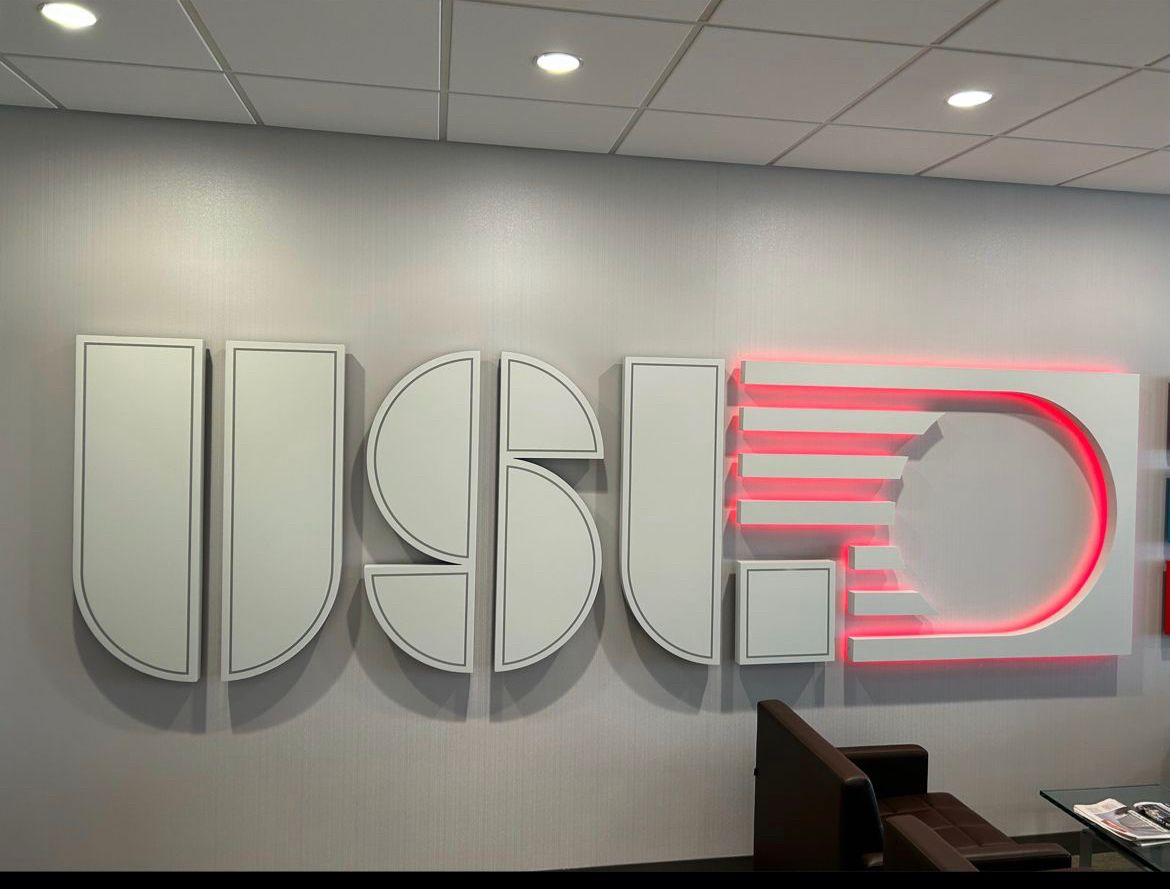
USL made national headlines when they announced on February 13th, 2025, their plans to launch a Division One league, followed by the announcement of promotion/relegation on March 19th for the new Division One league, the Championship, and League One. If sanctioned by US Soccer, USL Division One would be of equal status to MLS and compete for the best major soccer league in the U.S. The implementation of promotion/relegation in the USL would become the first in the U.S. and test the question asked for many years, “would pro/rel work in the U.S.” USL HQ informed the public that they planned to have the inaugural season of Division One during the 2027-2028 season with promotion/relegation beginning in 2028.
Until November 3rd, with the announcement of Tony Scholes being hired as the President of the Division One, only three teams have applied for membership to the inaugural season of Division one: Louisville City, North Carolina FC (who announced at the time of the Scholes news that they would fold until the launch of Division One), and Pittsburgh Riverhounds. There has been a rapid expansion of teams in the already existing leagues since the two announcements. Teams joining League One are: Fort Lauderdale FC (2026 debut), New York Cosmos (2026 debut), Port St. Lucie SC (2027 debut), Sporting Cascades FC (2026 debut), and Rodeo FC (2027 debut). Fort Wayne FC and Sarasota Paradise would also be joining League One from League Two (2026 for both teams). For the Championship, Reno, NV will once again have a team planned for a 2027 debut. Along with those teams, USL is actively working to expand to other markets. The markets and partners they are looking at are Brevard County, FL (Space Coast Pro Soccer), Riverside, CA (Riverside Pro Soccer), Brownsville, TX (City of Brownsville), Winter Garden, FL (Central FL Pro Soccer), Santa Rosa, CA (City of Santa Rosa), and Pensacola, FL (City of Pensacola).
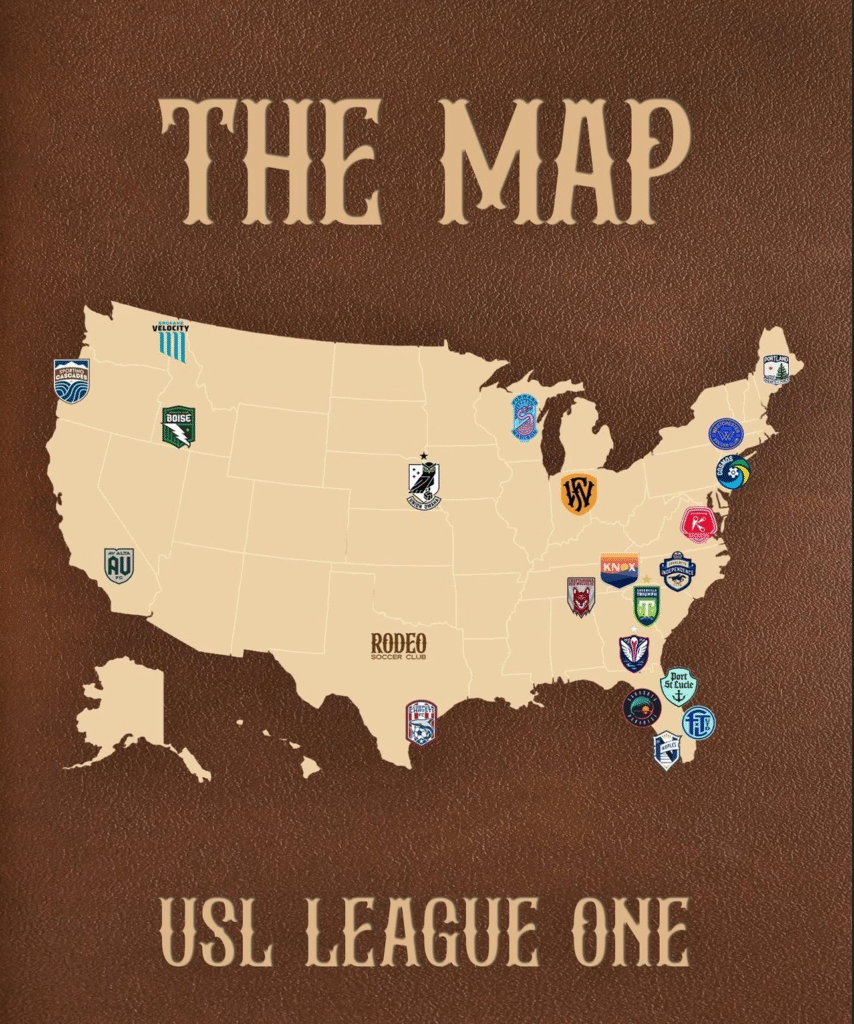
Along with these recently announced teams and partnerships, USL has teams joining the organization just in time for promotion/relegation that were announced prior to the February and March news. Starting with League One, these teams include: Corpus Christi FC (2026 debut) and Athletic Club Boise (2026 debut). As for the Championship, they will be adding Brooklyn FC (2026 debut), Sporting Jax (2026 debut), Atlético Dallas (2027 debut), Milwaukee Pro Soccer (TBD), USL Pro Iowa (TBD), Buffalo Pro Soccer (TBD), and Ozark United FC (2027 debut), while Santa Barbara Sky FC (2027 debut) would replace Memphis 901 FC.
Other than that, news on the Division One and promotion/relegation had been quiet until USL snatched Tony Scholes from the English Premier League. Tony Scholes will be the President of Division and help with the implementation of promotion/relegation. Scholes served as the chief football officer of the EPL and will join USL at the end of the EPL season. As of November 15, 2025, USL Division One has not been sanctioned as a division one league by US Soccer. The hiring of Scholes indicates that they are confident this new league will get approved or they have already been told it will, behind closed doors. The fact that we have not heard news on what the promotion/relegation format would be, and Scholes task would be to help implement it could mean that USL has not come to a decision on one. Since we do not have any ideas on what the format could be, I want to provide a possible option that they could go with.
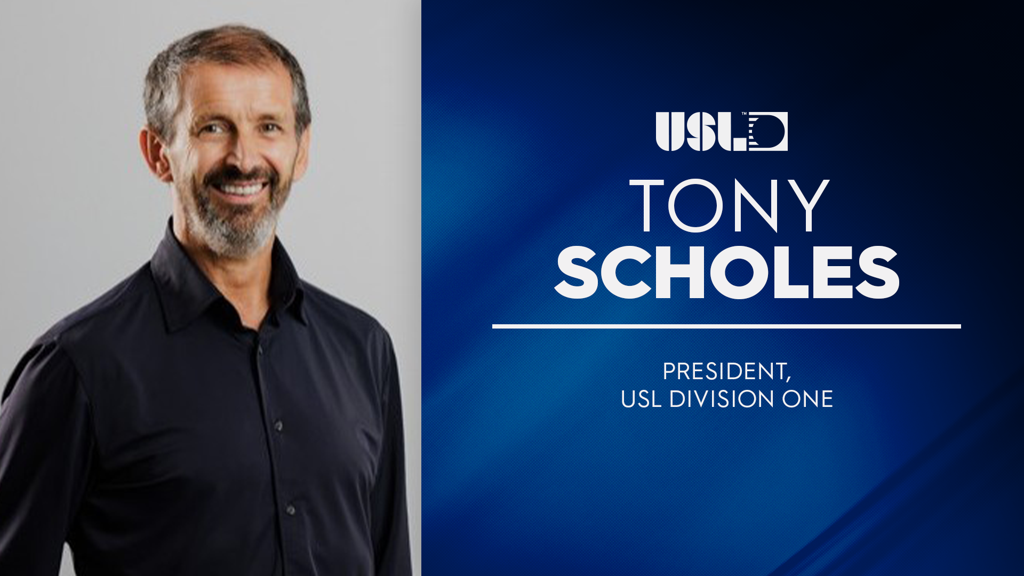
One of the biggest questions people have had since the USL announced promotion/relegation was how they would tie it to the playoffs. There is an option they could do, but it would result in only having one playoff. USL would have a playoff for Division One, but they would eliminate the concept for the Championship and League One. It might not be the most popular idea here in the U.S., but the main goal for the lower leagues is to get promoted, not to win a trophy. They would retain the league title for those two leagues with the winner being the team with the most points at the end of the season, just like how it is in the European leagues. The purpose is to create fairness for the top performing team(s) in the two lower leagues and reduce confusion. If there is a need for a playoff format, they could adopt the format the Bundesliga uses where the 16th best team in the first division and the 3rd best in the second division face-off in a two-leg match to see who would be in the first division the following season. The other option is the Championship concept, where the teams who finished 3rd through 6th in the table compete in a promotion playoff. The semi-finals are two-leg matches while the final is a single-leg match. The winner is promoted to the EPL. The execution of promotion/relegation must be done perfectly to retain fans, gain fans, prevent confusion, and be entertaining.
USL already has a division one league with their women’s Super League, who is competing against the NWSL. Currently, the S League has only nine teams (Brooklyn FC, Carolina Ascent FC, Dallas Trinity FC, DC Power FC, Ft. Lauderdale United FC, Lexington FC, Spokane Zephyr FC, Sporting Jax, and Tampa Bay Sun FC) to the NSWL’s 14 teams (3 teams in the works). The Super League will be adding an additional nine teams (Athletic Club Boise, New York Cosmos, Ozark United FC, Buffalo Pro Soccer, Chattanooga Red Wolves FC, Forward Madison FC, Indy Eleven, Oakland Soul SC, and USL Palm Beach) with all but three to have their inaugural season to be determined. What makes the S League unique from the rest of the soccer leagues in the U.S. is that they use a fall-summer schedule. Competing against a top five women’s league in the world is a tall ask, but it shows the ambitions of USL.
They are also willing to take risks by voting to pass promotion/relegation for the men’s league and have a fall-summer schedule for the S League. If the S League schedule format proves successful, it stands to reason that they would move the men’s leagues to the same schedule. It would also avoid the organization from having to fight MLS for viewership when the leagues are in play, especially when they launch a direct rival and are at their most ambitious point in their history. The same can be done for the S League if promotion/relegation is successful for the men. USL can start establishing lower women’s leagues and introduce promotion/relegation to the women’s game here in the U.S.
Many would say USL still stands no chance at competing against MLS, even with promotion/relegation and having a division one league. That is the case when you look at the quality of the players is finance, but that is the reason why the USL made these decisions based on the reports prior to the announcements and afterwards. Promotion/relegation and the introduction of a division one league could see an increase in investors. We are already seeing that with the likes of Gio Reyna joining Fort Lauderdale as an investor, BellTower Partners investing into USL, Sofia Huerta and Kasey Keller joining the Athletic Club Boise ownership group, and the Chickasaw Nation becoming an investor of the OKC for Soccer just this year alone. Then there is the expansion fee for MLS, MLS Next Pro, and the USL leagues. MLS charges an astounding $500 million! Yes, the money is used to construct a proper stadium, acquire players, etc., but at this point it will discourage many from purchasing a franchise license. MLS currently only has two leagues and one of them is advertised as a development league to prepare for MLS. The expansion fee for an independent team to join MLS Next Pro is unknown, but Sports Business Journal reported in 2024 that it is significantly cheaper than the USL Championship. The fee to join the USL Championship is $20 million while League One is only $5 million. These two fees are significantly lower than MLS and that will be more appealing to potential owners, but unlike the MLS fee, it is not enough for a stadium, training grounds, and players. As for what the fee is to join USL Division One, that is unknown at the moment.
I highly recommend reading the ESPN article by Jeff Carlisle titled “Will USL’s Move to Pro-Rel Change U.S. Soccer, Threaten MLS?” In there, Carlisle discusses the reasons behind the decision and that it is mostly financial. For example, a USL spokesperson said they expect to see an increase in commercial revenue by 15% to 30% due to promotion/relegation. Also, the former owner of San Diego Loyal lost $40 million in 4 seasons. As for the reaction from MLS, we have not heard one yet. The only possible reaction we have seen from them is what the former MLS Next Pro president, Charles Altchek, told to Backheeled back on March 6th, 2025. In the interview, he told them they aim to have 40 to 50 teams and a possible second league with one of the MLS Next Pro leagues being a second division, putting it in direct competition with USL Championship. The biggest question is, whichever league that is, can compete for fans? Due to the Apple TV deal, we currently do not have the ratings of MLS Next Pro. The closest idea we have is the attendance, which is 5,580 for USL Championship per match to MLS Next Pro’s 3,361, according to Transfermarkt. Unlike the attendance, the viewership for USLC is much higher where the season premiere match had 453,000 viewers. MLS Next Pro’s massive expansion plan announcement date was either a coincidence, or MLS got word USL’s promotion/relegation implementation with the division one news, and this was their response. I will let you come to your own decision.
It seems, as of right now, it appears MLS will sit back and wait to see how the USL’s Division One and promotion/relegation will play. Division One and promotion/relegation will either be successful for USL and lead them to the financial success they are hoping for or lead to the possible collapse of USL. American sports fans are not the only ones keeping their eyes on USL now, but the rest of the soccer world is after their two massive news. The coming years are going to be exciting times for American soccer!
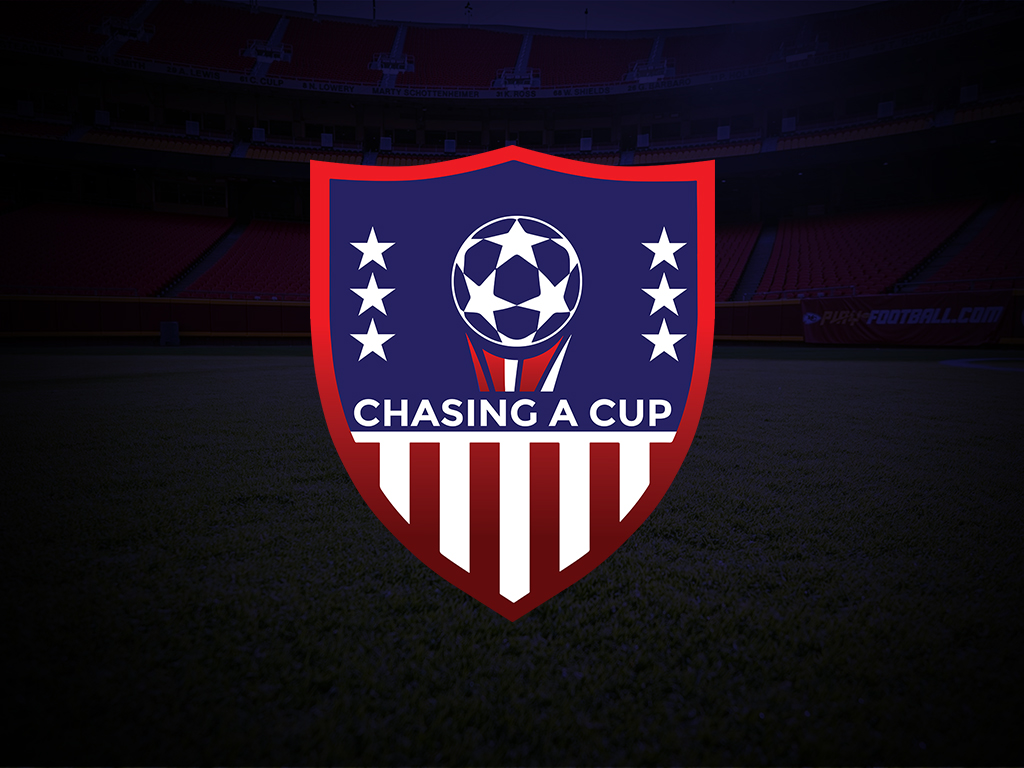

Breaking the Mold: Freese a Unique USMNT Goalkeeper

2025 Summer Transfer Window Review

USL’s American Soccer Dream

Trending
-

 Club News1 year ago
Club News1 year agoAmerican Transfers: Stock Up & Stock Down
-
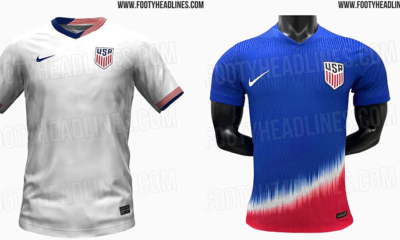
 USMNT2 years ago
USMNT2 years agoUSMNT Kits Come in Different Styles and Colors
-

 Club News6 years ago
Club News6 years agoJulian Vincente Araujo
-
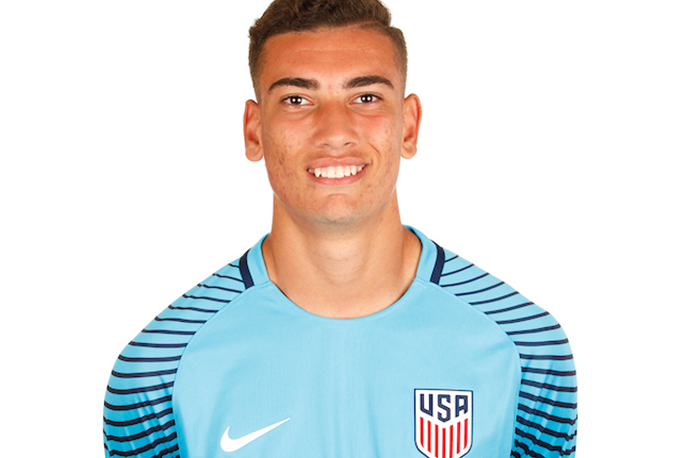
 Club News5 years ago
Club News5 years agoCJ dos Santos, Benfica
-

 USMNT5 years ago
USMNT5 years agoA Hidden Gem: Barça Residency Academy
-
USMNT3 years ago
World Cup Format History
-

 USMNT2 years ago
USMNT2 years agoIs the MLS Specifically Targeting Expansion to USL Cities?
-
USMNT6 years ago
MLS Quota

